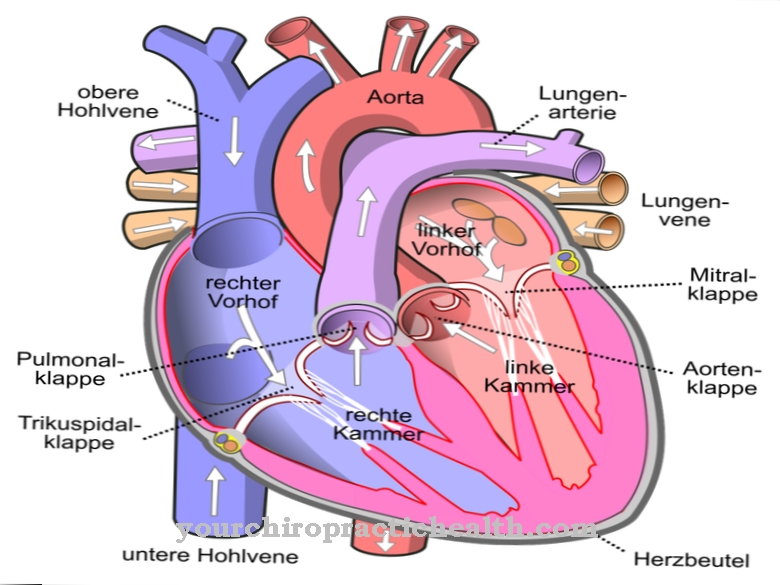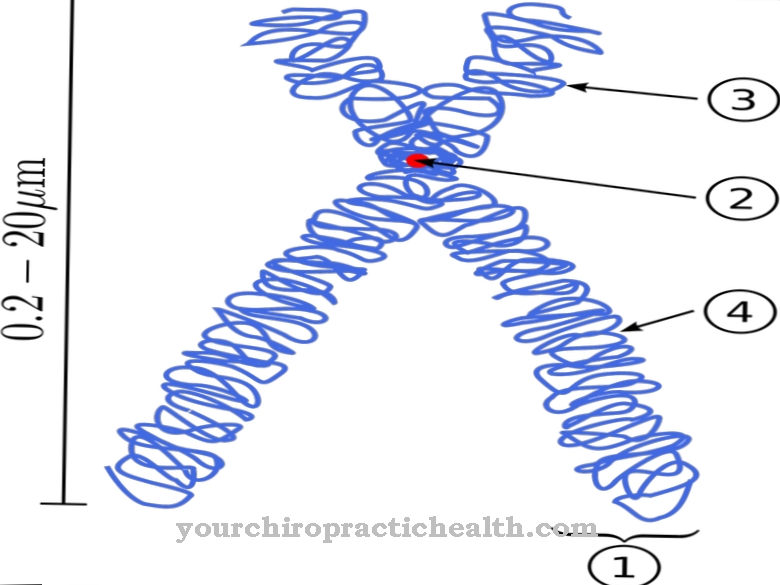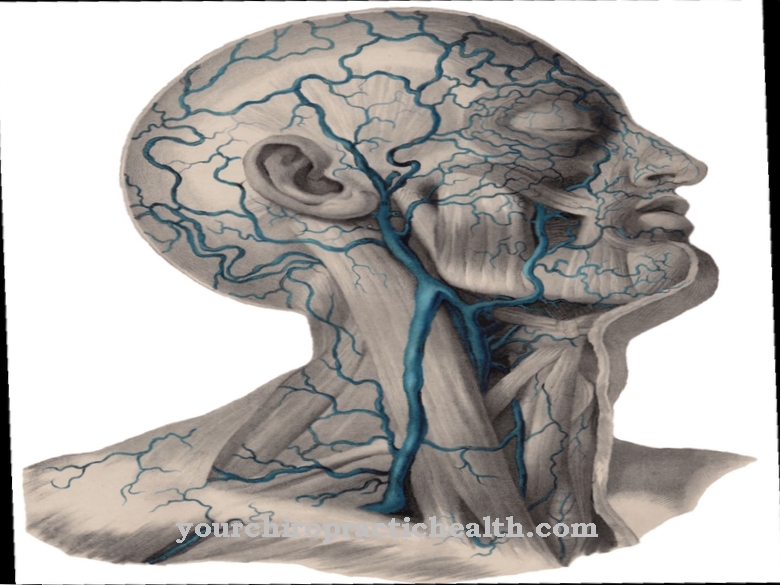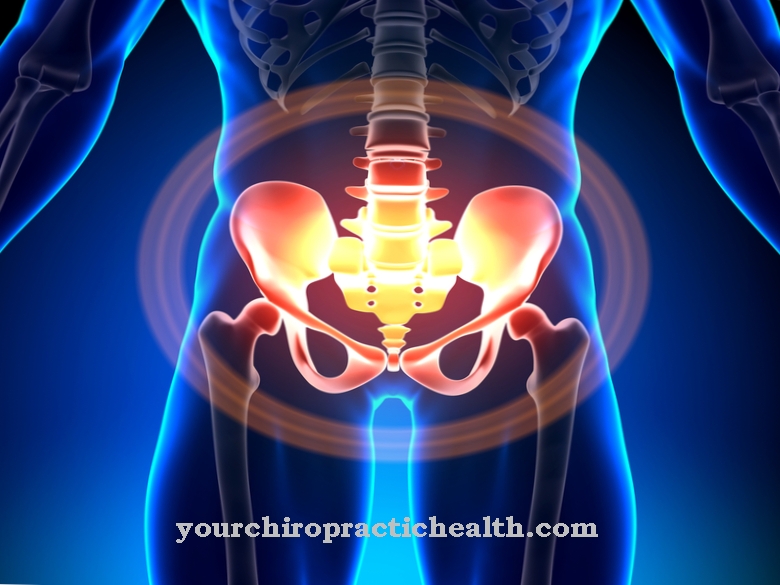Under the Arachnoid mater (lat. for Cobweb skin) is understood to be a component of the meninges. The human brain has three meninges, of which the spider web is the middle. The name comes from its thin, white collagen fibers, reminiscent of cobwebs.
What is the arachnoid mater?
As part of the meninges, the arachnoid mater is defined as part of the leptomeninx encephali (Greek for soft meninges). Its abbreviation is arachnoid and it is basically the area between the dura mater encephali (hard meninges) and the pia mater encephali (soft Meninges) located middle meninges.
The dura mater is on the outside, while the arachnoid is directly adjacent. The pia mater is furthest inward. The subarachnoid space (subarachnoid space) lies between the arachnoid mater and the pia mater. The two inner meninges, the arachnoid mater and pia mater, are also referred to as the soft meninges or leptomeninx.
Anatomy & structure
Anatomically, the spider web is a fine, thin, semi-transparent membrane without vessels. The whitish collagen fibers that give it its name are also referred to as trabeculae or trabeculae. The structure, reminiscent of a spider web, stabilizes the brain and spinal cord within the fluid cushion.
The arachnoid mater is again differentiated internally into two components that have a different position. The arachnoid mater encephali is the variant of the arachnoid that surrounds the brain. It is also known under the name of the arachnoid mater cranialis. In contrast, the variant that surrounds the spinal cord is called the arachnoid mater spinalis according to the Latin name for the spinal cord (Latin spinalis: relating to the spinal cord). The arachnoid mater cranialis follows the brain contour, but does not extend into the furrows (sulci) of the brain.
The subarachnoid space below the arachnoid mater belongs to the outer liquor space and is filled with cerebrospinal fluid (cerebrospinal fluid). Opposite, the arachnoid mater shows protuberances into the cerebral sinuses (venous blood conductors) of the dura mater. This happens through the arachnoid villi (small bulges), with whose support the CSF is absorbed. The arachnoid membrane covers the brain as a relatively smooth layer and, like the dura mater, does not run through the cerebral furrows.
Function & tasks
The arachnoid essentially has two functions that are indispensable for the functioning of the human brain. A central task of the arachnoid mater is found in the blood supply to the brain. The spider tissue is involved in this through a large number of smaller blood vessels. In addition, it has the important task of exchanging liquor (brain fluid) and the blood.
Liquor is absorbed via the arachnoid villi and this cerebral fluid is passed on to the draining blood vessels. The fine protuberances extend through the inner area of the dura mater into the sinus veins. The resorption of the CSF from the subarachnoid space is supported by the choroid plexus (a plexus of veins in the ventricle of the brain) in the internal CSF space. Through this, new nerve water is continuously generated. This ensures circulation and constant renewal of the liquor. The upper layer adjacent to the dura mater forms the blood-brain barrier.
The so-called tight junctions are also important in the brain. They are particularly tightly interwoven cell connections. They create a barrier that prevents blood components from entering the nerve water. Since some blood components can have a toxic effect on the nerve tissue, this blood-liquor barrier is particularly important. It must be taken into account here that numerous drugs cannot overcome this barrier either. In order to show effectiveness in the brain, a molecular reorganization of the drugs is therefore necessary.
Diseases
Because of the central functions of the arachnoid mater for the human brain, damage to this part of the meninges is particularly critical. A disease in connection with which the arachnoid is often dangerously affected is meningitis (meningitis).
Some variants of meningitis lead to life-threatening complications. Infections leading to meningitis can be bacterial or viral, and especially bacterial variants can quickly become dangerous. Symptoms include stiff neck, headache, dizziness, attacks of fever and also neurological abnormalities or failures. A particularly problematic variant is meningococcal meningitis, in connection with which around a third develop sepsis (blood poisoning). In the event of injuries in the various meninges, bleeding usually occurs.
For example, traumatic brain injuries often cause epidural bleeding (bleeding in the area of the dura mater). The problem with cerebral haemorrhage are the symptoms that appear in free intervals, which often make those affected think they are in a false sense of security. After a short period of unconsciousness, the patient is often subjectively better, before a further loss of consciousness can occur. As a result, around a third of those affected die from the consequences of the bleeding. In the special connection with the arachnoid mater, subarachnoid hemorrhages (bleeding in the space between the arachnoid mater and pia mater or subarachnoid space) are dangerous.
The causes of such bleeding are often aneurysms, i.e. ruptures of vascular sacs. In this case, this affects vessels of the arachnoid mater or the pia mater. Symptomatic of such a rupture are severe headaches, an increase in intracranial pressure with a decrease in blood pressure, as well as impaired consciousness and vomiting. Cerebral hemorrhages in the subarachnoid space are only survived by about a third of those affected without any consequential damage. A third of patients no longer reach emergency care on time, while the second third dies in hospital or suffers severe disabilities.



























